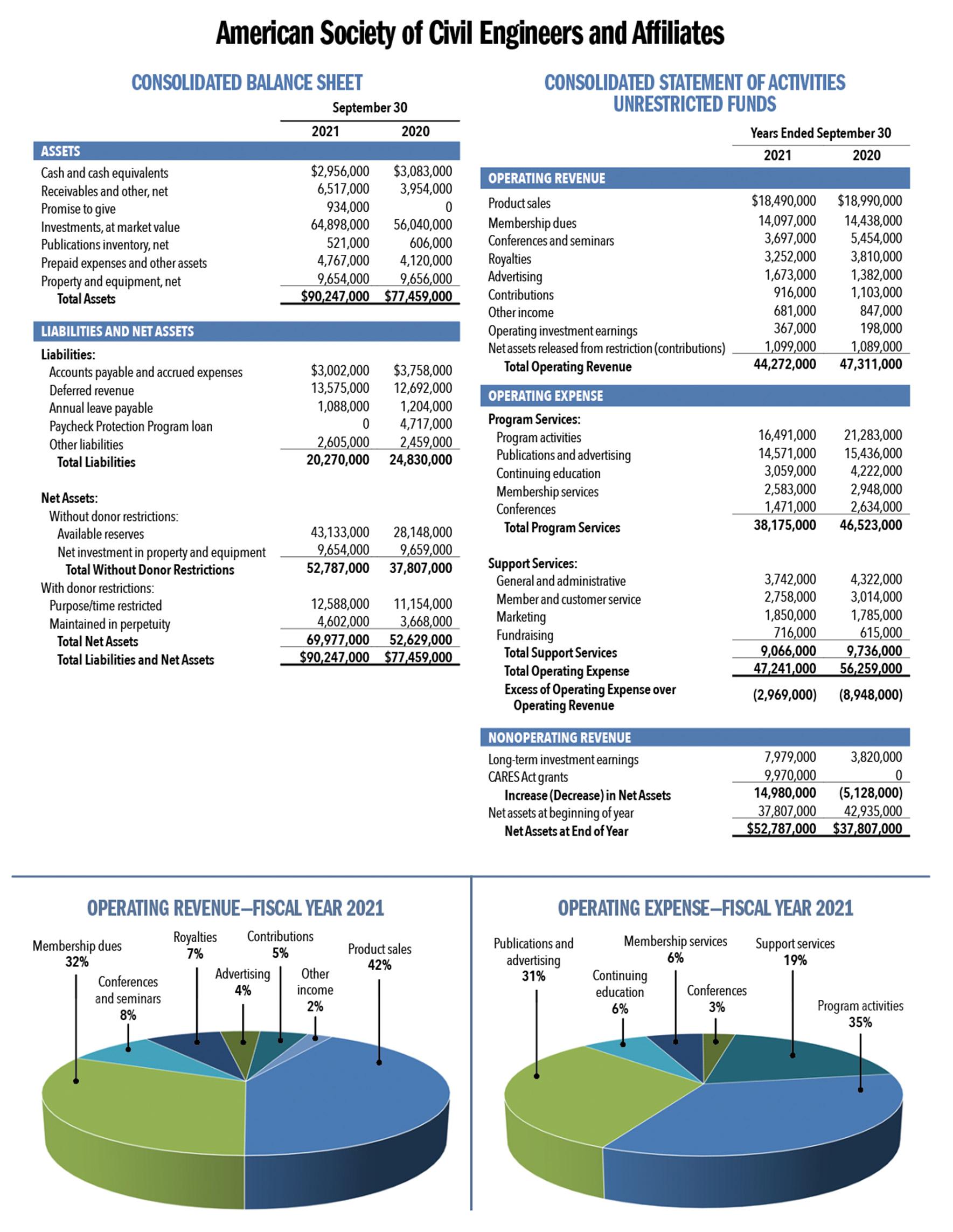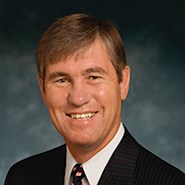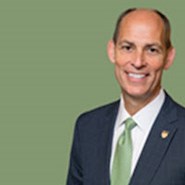
By Jean-Louis Briaud, Ph.D., P.E., D.GE, Dist.M.ASCE, and Thomas W. Smith III, CAE, ENV SP, F.ASCE
2021 was a year of challenge and transformation, bringing forth new obstacles and opportunities and a long list of accomplishments.
As heralds of change and innovation, civil engineers are entrusted to protect our communities. ASCE stands at the forefront of the profession, leading this charge through rapidly changing conditions, with our sights set on safeguarding the public and building a better tomorrow.
Our 2021 Report Card for America’s Infrastructure, which gave the U.S. an overall C- grade, highlighted the investments needed to modernize and improve our nation’s infrastructure. With the support of engineering and government leaders nationwide, our members rallied to explore infrastructure solutions at the ASCE Solutions Summit, raising the visibility and impact of the report card to new heights.
The passing of the historic Infrastructure Investment and Jobs Act marked a generational federal investment in U.S. infrastructure. For ASCE, it represented the culmination of more than 20 years of infrastructure education and advocacy efforts by thousands of ASCE members across the country. In addition to extensive media interviews covering ASCE’s report card and related studies, ASCE was also proud to join the bill signing ceremony on the White House lawn.
Recognizing the opportunity this historic investment in infrastructure represents, the Society took tremendous strides in promoting more sustainable and resilient infrastructure. Our ongoing efforts were highlighted at the 2021 United Nations Climate Change Conference and the ASCE 2021 International Conference on Sustainable Infrastructure. We also further developed our standards for building sustainable and resilient structures. The release of the ASCE/SEI 7-22 Minimum Design Loads and Associated Criteria for Buildings and Other Structures includes various technical updates and the first-ever criteria for tornado-resistant design.
With the uncertainty ahead, we’ve been examining the future through a different lens. Following extensive research, Mega City 2070 models a plausible future city that has grown from a population of 15 million in 2020 to 50 million in 2070. This desktop-based virtual experience is a part of ASCE’s Future World Vision initiative, created to help engineers reimagine infrastructure for a world 50 years from now. It’ll also give insight into civil engineers’ role in developing a sustainable tomorrow as we launch this program into museum science centers in 2023.
Building a better future begins with empowering our members and the next generation of engineers. We gave student members a bigger voice to share their concerns and perspectives with Society leaders through the Student Presidential Group. The ASCE Foundation also received a record-breaking donation to fund student activities for years to come. We also completed a new student conference plan that aligns with ASCE’s geographic regions, brings back the student steel bridge competition, and expands the student innovation contest. But cultivating engineering success does not stop at graduation. Our smoother student-to-professional member transition and improved digital strategy — featuring a new website and ASCE Career Connections — will help launch them to success.
There were many other accomplishments in 2021, including completing the ASCE headquarters sustainable parking lot, launching the Government Engineers Council while adding new state departments of transportation as ASCE partners, launching the new Publications Legacy Journals Archive with digitized content dating to 1872, and new diversity, equity, and inclusion videos and best practices guides. We also strived to enhance communication between Society leadership and members through monthly “Ask the President” town hall meetings, “From the President” progress reports, and the President’s Note columns featured in Civil Engineering magazine.
It’s ASCE’s core mission to serve civil engineers who take on societal challenges at a global scale. While 2021 saw many adversities, your contributions as members helped us drive the profession and our organization forward. As we look to 2022, we are optimistic about the journey ahead with your support and dedication in helping us build a better world for tomorrow.
Fiscal 2021 financial report
For fiscal year 2021, the Society and its affiliates had unrestricted operating revenues of $44.3 million and unrestricted operating expenses of $47.2 million, with the Society funding expenses in excess of revenues by using earnings on our investment portfolio, program contributions from the ASCE Foundation, and reserves. The economic impacts of COVID-19 resulted in a significant reduction in revenues along with associated expense reductions. The Society received $9.97 million in grants through the Coronavirus Aid, Relief, and Economic Security Act that helped offset some of the financial impacts of COVID-19.
The Society continues to be in sound financial condition. Our policy of building and maintaining a reserve fund, which totaled $43.1 million at year-end 2021, is a key factor in our positive financial condition. The reserve fund has been built primarily from earnings on our long-term investment fund, which yielded $8 million in 2021 and $3.8 million in 2020.
The relationship between annual operating revenue and program expenses is a key long-term issue that the Board of Direction is addressing to maintain our continued strong financial condition while serving our membership and the public interest.

Jean-Louis Briaud, Ph.D., P.E., D.GE, Dist.M.ASCE, was the ASCE 2021 president. Thomas W. Smith III, CAE, ENV SP, F.ASCE, is ASCE's executive director.
This report first appeared in the March/April 2022 issue of Civil Engineering as “Building a World for a Better Tomorrow.”




